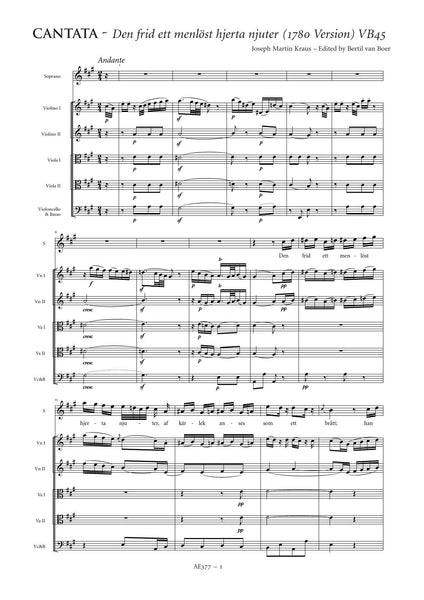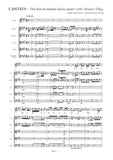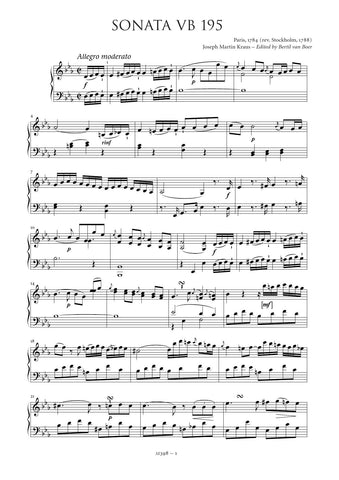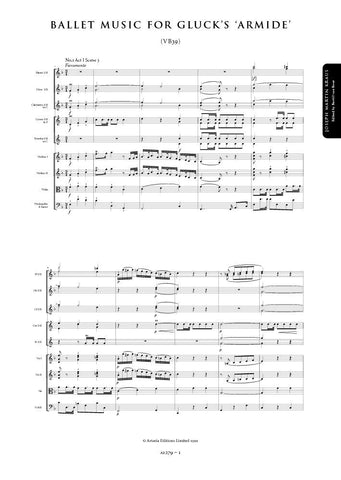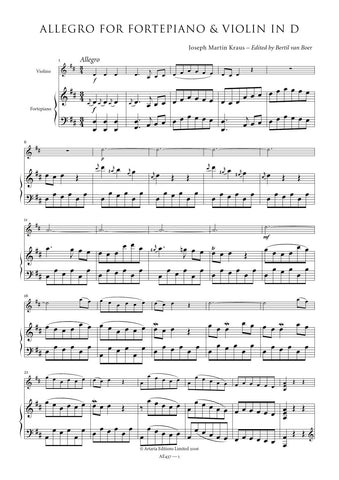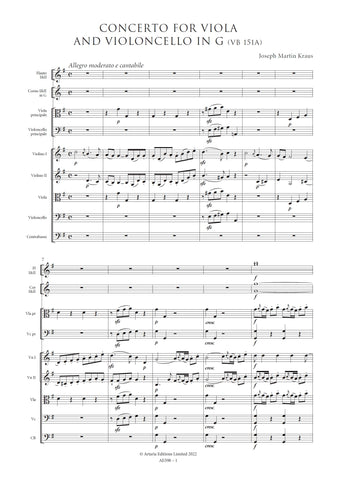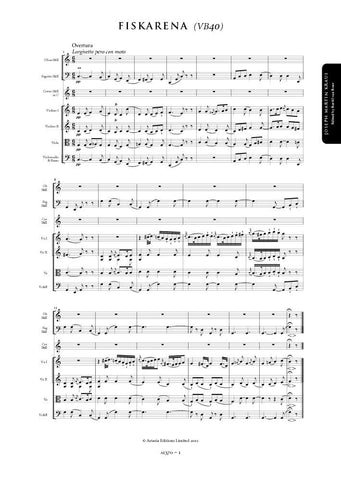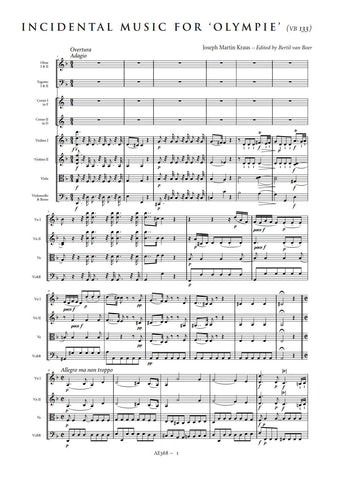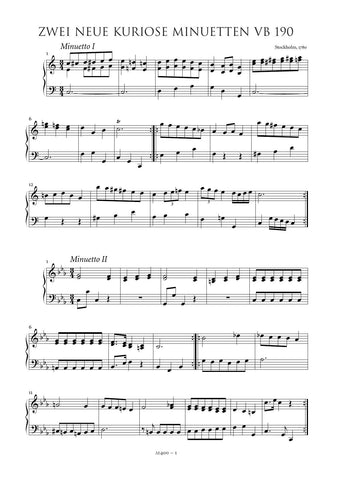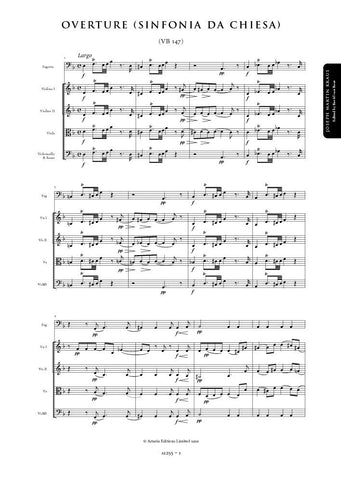Details
|
The Swedish secular cantata Den frid ett menlöst hjerta njuter [The peace that a content heart enjoys] (VB 45) exists in two versions composed two years apart. The first version, which is represented by this edition, was apparently written in 1780 during Kraus's first years in Sweden. It is not known who wrote the text, nor is it clear for what purpose it was written, although most likely some performance at the Riddarhuskonserter public concert series can be suggested. During this period the composer was establishing himself in the Swedish capital, and this work may represent his first opportunity to work with a resident poet; the style of writing suggests someone like Johan Gabriel Oxenstierna, from whose library both versions came according to stamps on the two autograph scores. The poem itself is a relative oddity, a somewhat allegorical pastorale that seems to be based principally on shifting emotions. The imagery is subject to various interpretation. The first section seems to indicate the power of love to cause emotional turmoil, while the final aria contains a sort of pseudo-Christian scene of a flock resting secure under the gentle care of a shepherd, before being turned loose to wander aimlessly after a disruptive thunderstorm. There is a strong implication of eroticism that has a direct affinity with the famous idyllic epic poem of Atis och Camilla by Gustav Philip Creutz, a work which resembles the cantata in several respects. Given that sacred music was held in relatively low esteem by the more secularised Gustavians, and ambiguous intricate poetic works with different meanings on several levels are not unknown in Sweden of this period, it is likely that the cantata represents a special type of work whose interpretation is subject to debate. In any case, Kraus himself must have liked the text enough to have revised it, although to be sure specific performance details are lacking. There exists one source for this version of the cantata, an autograph score in the Royal Academy of Music Library (now Statens Musiksamlingar) in Stockholm, Sweden (Signature Z/Sv). The cantata consists of a large through composed section consisting of an aria, a rather lengthy recitative, and a brief arioso that moves easily from A major to EÏ major by way of enharmonic shifts. The orchestration consists of strings only, but with the divided violas playing an important melodic role the textures are often thick and lush. The brief arioso that ends the section is a soft barcarolle with flowing sextuplet violins, the main theme in a lone oboe, and counter melodies in the divided violas. The second section consists of a bipartite aria. The first section is a pastorale in G major complete with flutes and horns. It begins without preamble and features considerable word painting when the text describes the flashing lightning, the crashing thunder and the destruction of mountains, including some rather pointed virtuoso ornamentation by the voice. This is followed immediately by a final section in e minor, which is constructed as a through-composed lament like a fragile minuet. This edition follows the original autograph, which in turn is extraordinarily detailed in terms of dynamic and articulation markings. Throughout the first section the violas have been divided, although they are written on the same staff in the recitative part of the source. The composer clearly distinguished between dots and dashes; his indications have been followed and the occasional missing articulation added tacitly following parallel passages. The fermatas in bars 71 and 107 are clearly not to be ornamented by the vocalist, rather they serve only as ad libitum sectional divisions with the notes to be performed exactly as written. In the arioso, the original score simply states "violini" for the sextuplet accompaniment line. The editor has divided this between the violins, even though it is clear that a unison is meant. Bertil van Boer
|




